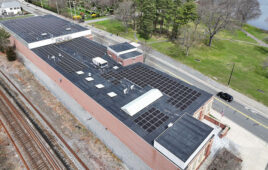The National Alliance for Advanced Transportation Batteries (NAATBatt) selected its top emerging battery technologies of 2019.
Among them was Tydrolyte, an electrolyte that is a less toxic drop-in replacement for sulfuric acid in lead batteries with significant performance improvements. Tydrolyte will be among 10 featured companies to present at the Battery Innovation Summit during NAATBatt’s annual meeting and conference in Phoenix, Arizona, on March 14.
Featured companies were identified by the battery organization as having the most promising new battery technologies available in 2019 for licensing, investment or acquisition.
Lead acid batteries are the oldest and most widely used rechargeable battery technology globally with unsurpassed advantages in cost, reliability and sustainability. Tydrolyte test results show significant improvements in critical lead battery performance metrics enabling longer operating life and improved lead battery economics for both manufacturers and users. Boris Monahov, the industry’s top lead battery technology expert and a member of Tydrolyte’s Advisory Board, has called Tydrolyte “one of the most significant technical advancements in the 150-year history of lead batteries.”
“There is a global race to develop and commercialize new battery technologies that deliver less expensive and longer lasting batteries, and this award recognizes the role Tydrolyte can play in this effort,” said Paul Bundschuh, CEO, Tydrolyte. “I’m proud of the innovation Tydrolyte is bringing to the world’s most common rechargeable battery, and our hope is to enable the market for lead batteries to remain strong for decades to come.”
Lead acid batteries continue to be the dominant global rechargeable battery technology with over 600GWh shipped annually. As a drop-in replacement for sulfuric acid, Tydrolyte can be adopted in existing factories without requiring new equipment or process changes. The electrolyte increases battery life, battery efficiency and charge acceptance—all critical performance parameters needed for stop/start and mild hybrid vehicles, industrial applications and stationary grid storage.
The global lead-acid battery market is expected to reach $84.46 billion by 2025, according to market research firm Grand View Research.
The remaining nine emerging battery technologies selected for the NAATBatt summit are EnZinc, Excellaron, Astrolabe Analytics, Membrion, Salient Energy, Transthermal Heat Bridge, Johnson Battery Technologies, Besstech and Binghamton University SUNY.
News item from Tydrolyte





So, I jumped over to the Tydrolyte site and read an article that the CEO was at some batterycon type meeting. The CEO dipped his finger into the “solution” and put some on his face and on his tongue to show its nontoxicity. The problem I have with that, is that the stomach is the most acidic space of the body human. Most of the body and the mouth included would be around 6.5 to 7.5 PH. The photo in the article hinted that Tydrolyte is around a PH of 1 just like sulfuric acid. So, what was the CEO putting on his face and tongue?
There is a carbon foam plate lead acid technology developed by Firefly Energy. This technology is supposed to make lead/acid batteries less susceptible to sulfate formation, problems with cold temperatures. IF one was to replace the sulfuric acid in a Firefly Energy battery with Tydrolyte, would this enhance the lead/acid battery performance and longevity over the old lead/acid architecture? Could one possible exchange sulfuric acid in an online battery with Tydrolyte and increase the longevity in the typical deep cycle cells used in solar PV installations now? Surret, Trojan and other 2VDC deep cycle cells could have a resurgence in the energy storage arena. It would be interesting if this new electrolyte could extend the batteries effective life from 10 to 20 years with little to no, extra maintenance needed or cost incurred.
Interesting info.
Good day;
Based on my own experience, the best two types of batteries are:
a- Zink-Bromide flow battery, life span of which ranges between 20 to 30 years. This is excellent and robust.
b- Lead Crystal battery, which life-span ranges between 7 to 12 years. This is very good and affordable. Does anybody know of USA manufactures of Lead Crystal Batteries?
Then comes the LifePO4 battery, which is noticeably good, but has few side complications (including its BMS and temperatures).
I wonder about Tydrolyte?
Ammar Milhem
amilhem@greenstealth.com